 Leading Blog | Posts by Category |
 Leading Blog | Posts by Category |
12.23.11

What Can Be Done About Biases?
HOW can we improve judgments and decisions, both our own and those for the institutions we serve and that serve us? The short answer is that little can be achieved without a considerable investment of effort. Two systems drive the way we think and make choices: System One is fast, intuitive, and emotional; System Two is slower, more deliberative, and more logical. The way to block errors that originate in System 1 is simple in principle: recognize the signs that you are in a cognitive minefield, slow down, and ask for reinforcement from System 2. 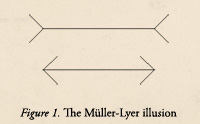 The voice of reason may be much fainter than the loud and clear voice of an erroneous intuition, and questioning your intuitions is unpleasant when you face the stress of a big decision. More doubt is the last thing you want when you are in trouble. The upshot is that it is much easier to identify a minefield when you observe others wandering into it than when you are about to do so. Observers are less cognitively busy and more open to information than actors. Organizations are better than individuals when it comes to avoiding errors, because they naturally think more slowly and have the power to impose orderly procedures. Organizations can institute and enforce the application of useful checklists, as well as more elaborate exercises, such as a reference-class forecasting and the premortem. At least in part by providing a distinctive vocabulary, organizations can also encourage a culture in which people watch out for one another as they approach minefields. Ultimately, a richer language is essential to the skill of constructive criticism. There is a direct link from more precise gossip at the watercooler to better decisions. Decision makers are sometimes better able to imagine the voices of present gossipers and future critics than to hear the hesitant voice of their own doubts. They will make better choices when they trust their critics to be sophisticated and fair, and when they expect their decisions to be judged by how it was made, not only by how it turned out.

Posted by Michael McKinney at 08:21 AM
06.16.11

To Focus on the Work, You Must Focus on People Doing the Work
Many managers think they manage the work. They don’t. They’re responsible for the work, but they get work done by influencing the people who do the work. What makes this complicated is what Peter Drucker pointed out: when you hire a hand, it comes with a head and heart attached. So you must pay attention, lots of attention, to the whole person—head and heart—because you need more than your people’s time and attention. Most work now requires knowledge, judgment, thinking, and decision making, and so it matters if people care about what they do. You cannot simply give them orders and criticism. That rarely produces the kind of engagement you need. Other, less direct but more effective forms of influence—such as support, development, and encouragement—are needed that engage the whole person. Do you tend to focus on the work or on the people doing the work? In other words, do you tend to confront and criticize, or do you support people and give them what they need to do good work? Adapted from Being the Boss: The 3 Imperatives for Becoming a Great Leader by Linda A. Hill and Kent L. Lineback. 
Posted by Michael McKinney at 05:45 PM
12.02.10

You’re Not the Most Important Person in the Room
When you are knighted [manager], an invisible sign appears in the center of your forehead and flashes on and off: BOSS … BOSS … BOSS. You can’t see it, but everyone who works for you can. You see lines of people standing around waiting to talk to you. The people who talk to you do it with deference. You notice that your subordinates seem to be concerned about the way they talk to you, but you see no reason why you should be concerned about the way you talk to them. You become aware that when you ask people to do things they do them. After all, they are only there to do your bidding. Quite happily, most of them do so, except the incompetent ones. Because people around you do what you tell them, you become even more impressed with your own importance. But what has happened is that you have become deluded into believing that you are the most important member of that group. Because you believe they need you more than you need them, you treat them accordingly. You get involved in self-destructive behavior. You get lazy and you stop managing; you just keep score. The sad but true fact is that YOU NEED THEM MORE THAN THEY YOU NEED YOU. You can’t get the job done without them. Adapted from Coaching for Improved Work Performance by Ferdinand F. Fournies.
Posted by Michael McKinney at 09:27 AM
08.13.10

Whatever Happens Is Normal
One of the most valuable ideas I’ve ever discovered in terms of creating calm in the midst of a storm, and helping me keep my head when those about me are losing theirs, is the idea that whatever happens is normal. Not that whatever happens is always desirable or even acceptable, but that it’s almost always normal. A simple example of that would be having a flight canceled because of bad weather. Now this might wreck your schedule and cause you to have to completely rethink your plans, but, as a very, very frequent flyer, let me assure you that canceled flights are normal indeed. Because I see canceled flights as normal, I don’t go into a tailspin when it happens. I know what to do to either find an alternate way of getting there or, at the very least, minimize, the damage that may come from not getting where I wanted to be at the anticipated time. All around me I see people, some of whom are obviously seasoned travelers, going into complete state of panic and anger over what is really a very common occurrence. I wonder if they just haven’t been paying attention for the past 20 years. This idea that “whatever happens is normal” is what separates those who handle change effectively from those who go ballistic at the slightest deviation from what they had expected. We’ve all seen both types. On the one hand are the people who, if you tell them that there’s been a change in plans, policy, schedule, the menu, or virtually everything else, will quite completely lose it. They will either sink into a fuming funk or launch into a screaming rant. Either way, they don’t do well when the plans change. The other end of the spectrum are the people who, regardless of what kind of changes you throw at them, seem to handle problems almost effortlessly. These people tend to be among the most valuable in an organization. The value of a person with the ability to perform well under pressure cannot be overestimated in a world where constant pressure is the norm. Adapted from Becoming a Category of One by Joe Calloway.
Posted by Michael McKinney at 03:36 PM
06.10.10

Top Five Rules for Digital Marketing Success in an Anytime, Everywhere World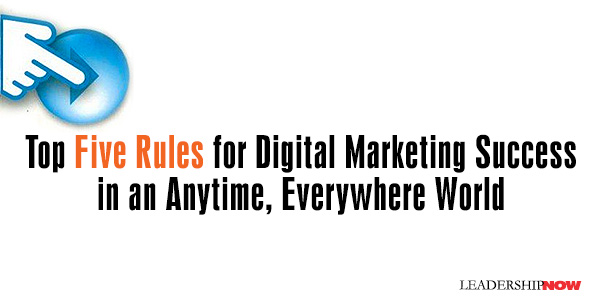
Rule #1: Insight Comes Before Inspiration. The most successful digital initiatives typically don't start with the idea for a cool new digital experience. Instead, they start with consumer insights culled from painstaking research into who your customers are, what they're all about, how they interact with consumer technologies, and what they want from the brands they know and trust. Case in point: Dove's "Campaign for Real Beauty." Rule #2: Don't Repurpose, Reimagine. Creating multi-platform strategies that connect with audiences where they live doesn't just mean posting television spots on YouTube in the hopes they go viral. In a medium where the possibilities are endless, television is the jumping-off point to much more interactive and engaging experiences. You've got to invent new ways to help your customers make your brand their own. Case in point: HBO's Voyeur Project. Rule #3: Don't Just Join the Conversation -- Spark It. Out of the over 600,000 branded pages that Facebook Page Tracker monitors, a mere 57,000 have more than 1,000 "fans." Apparently, most people don't want to be friends with a brand. If you want to be part of the conversation on social networking sites, be the party that initiates it -- through compelling experiences that keep customers talking. Case in point: Johnson & Johnson's BabyCenter. Rule #4: There's No Business Without Show Business. Your brand is a story; tell it. Don't just sell product; sell the problem it solves, the feeling it gives, the status it conveys, or the value it embodies. But beware of pushing to transform your brand's website into an "entertainment portal" simply for entertainment's sake. In the on-demand era, the best-branded entertainment experiences are P-O-S-itive -- that is: personalizable, ownable, and sharable. Case in point: Degree antiperspirant's webisode series "The Rookie." Rule #5: Want Control? Give It Away. "User-generated content" (UGC) might not be cutting edge (it's been featured on ABC-TV's America's Funniest Home Videos for nearly twenty years), but it's a big-time buzz builder. Young consumers, especially adolescent males, seem more than happy to create their own video ads to upload on YouTube and email to friends. How do you give away control while simultaneously getting what you want? Ensure rewards for making UGC promote your brand, rather than mock or bash it. Case in point: Doritos' $1 million contest for creating a Super Bowl commercial, which, according to the company, generated $36 million in free publicity for the brand before and after the big game. Adapted from The On-Demand Brand: 10 Rules for Digital Marketing Success in an Anytime, Everywhere World by Rick Mathieson. 
Posted by Michael McKinney at 10:32 AM
05.20.10

Share Your Ideas Liberally Scott Belsky makes the case in Making Ideas Happen for sharing your ideas with others. To make it part of the corporate culture you may even have to “move people around and literally share people to share ideas.” Former Belsky colleague Steve Kerr, even went so far as to say that “’hording information is an integrity violation,’” making the case that failing to share a best practice with your team or department was essentially akin to stealing from the company.” Belsky explains the rationale for sharing ideas liberally: The notion of “sharing ideas liberally” defines the natural instinct to keep your ideas a secret. Yet, among the hundreds of successful creatives I’ve interviewed, a fearless approach to sharing ideas is one of the most common attributes. Why? Because having the idea is just one tiny step along the road to making that idea happen. During the journey, communal forces are instrumental in refining the very substance of the idea, holding us accountable for making it happen, building a network that will push us to go above and beyond, providing us with valuable material and emotional support, and spreading the word to attract resources and publicity. By sharing your idea, you take the first step in creating the community that will act as a catalyst to making it happen. He who receives an idea from me, receives instruction himself without lessening mine; as he who lights his taper at mine, receives light without darkening mine. That ideas should spread from one to another over the globe, for the moral and mutual instruction of man, and improvement of his condition, seems to have been particularly and benevolently designed by nature. Adapted from Making Ideas Happen: Overcoming the Obstacles Between Vision & Reality by Scott Belsky.
Posted by Michael McKinney at 04:31 PM
08.20.09

What Is Meaningful Today Will Remain Meaningful Tomorrow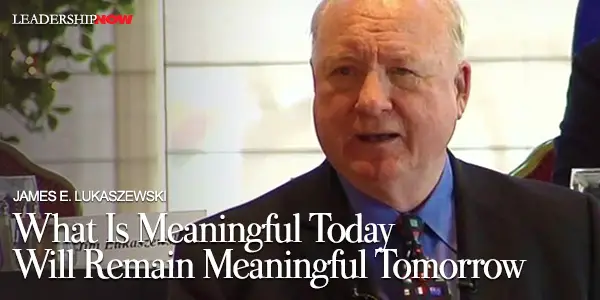
 CEO of The Lukaszewski Group Inc., James E. Lukaszewski (loo-ka-SHEV-skee) has been named as one of the top “28 experts to call when all hell breaks loose.” He is a coach to many CEOs and author of the excellent book, Why Should the Boss Listen to You? He also maintains the Crisis Guru Blog. In a presentation earlier this year, he offered this advice: When you get to be my age and look like me, you tend to get a lot of trend type questions. It’s a polite way of being asked to share the observations of a long and, presumably, useful career. In my case, the question, specifically, is often about trends in crisis situations, since that’s been the main focus of my career and work. “Was I seeing new or different kinds of crimes or problems committed by clients?” I usually respond with a question—have there been any new Commandments since the last 10 came out? The questioner, usually with a puzzled face, will say, “Well, no. The 10 we have are the 10 we’ve got.”  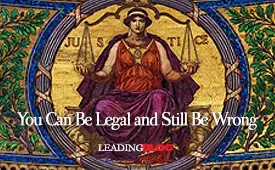
Posted by Michael McKinney at 07:46 AM
07.03.09

10 Rules For Leading the Turnaround of a Declining Business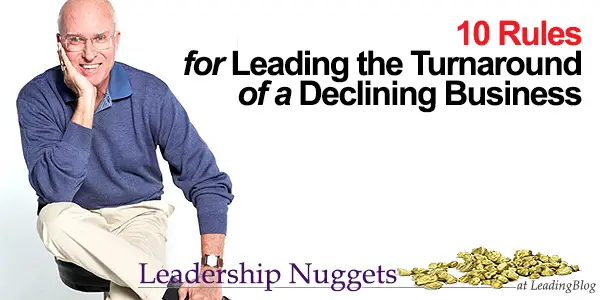
I have been involved in turnaround situations at Topco Associates, Kayser-Roth Corporation, and Cordiant. The similarities between these situations were greater than the differences. In each case, they were companies that had fallen on hard times, but there was a belief that they could rise again like a phoenix from the ashes. Additionally, the fact that the companies were not doing well was by no means a secret to the employees, who were always eager to have the leadership that could bring it all back together and get things moving again.Here are my ten rules for a successful turnaround: Rule 1. When formulating goals, start with the answer and work your way back to the solution. Do not get bogged down in the morass of yesterday. Get going toward where you need to be in the immediate future. At Cordiant, we developed a five-year financial forecast within three months of arrival that we used as the basis for refinancing the company. Subsequently, we exceeded every benchmark of that forecast. Rule 2. Get out in front of people immediately and position yourself as the new leader in the company. Tell them who you are, what you believe in, why you are there, your perspective on the situation, and how you intend to proceed. At Cordiant, I visited all the principal people and major locations in London and New York in my first two days. Rule 3. Bring an extraordinarily high sense of urgency to what you are doing, but also look before you leap. People are anxious for results, but this is no time for dead ends. Think carefully about everything you do, but keep moving. At Topco, we immediately commenced development of a line of environmentally-friendly products because there was an obvious niche and need in the market for them. Rule 4. Do not sit around headquarters! Get out to where the work is done—plants and field offices. You need this input, and you need to be a motivating force for people. At Cordiant, I got around to offices accounting for 60% of our revenues in the first six months. Rule 5. Go out and listen to customers and clients. At Kayser-Roth, one of my first visits was to Wal-Mart. They told me, “Mr. Seelert, we are concerned about the viability of your company as a supplier.” Two years later, we were named their vendor partner of the quarter. If I had not personally gone there to listen and learn, I doubt that this would have happened. Rule 6. Listen to everybody in the organization who offers an opinion about the business—don’t just hang around with the people who report to you. There are two sides to all coins and stories. You need to understand both. If you can, meet with your competitors or the heads of similar organizations. When I went to Cordiant, I met with the heads of other holding companies, agency networks, consultancies, and service organizations. Rule 7. Recognize that you cannot get the job done alone. Open communications and clearly assigned accountabilities are essential. Your visits to locations provide the forums for rallying and directing the teams, as well as quickly identifying the true talents across the organization. Rule 8. Lay out your vision, purpose, values, beliefs, objectives, strategies, and plans for accomplishment as quickly as possible. People cannot really get going until you set the right direction. At Cordiant, I laid out my initial vision on day one: to be the “World’s Best Creative Communications Resource.” I indicated that I would be a good listener and that together, we would drive the vision forward from there. Rule 9. If you do not have the internal resources to get the jobs at hand done, do not be afraid to use outside resources. At Cordiant, we employed Price Waterhouse Business Turnaround Services. At Kayser- Roth and Topco, we hired Luther & Company. Rule 10. Develop the short list of critical priorities and stick to it. At Cordiant, it was two things: stabilize clients and staff, and refinance the company. Accomplishing these two goals set the stage for everything else. BOB'S WISDOM: Turnarounds are intensely difficult 24/7 situations. Follow the ten rules and you will prosper. Adapted from Start with the Answer: And Other Wisdom for Aspiring Leaders by Bob Seelert. 
Posted by Michael McKinney at 09:44 AM
03.06.09

7 Vital Behaviors of Effective Problem-Finders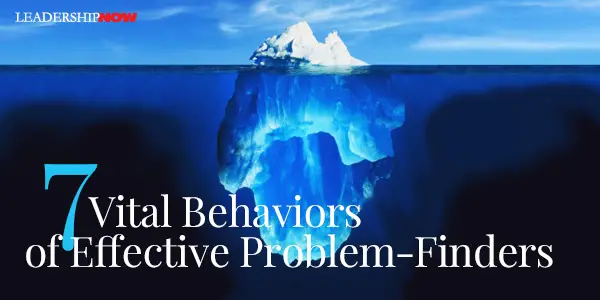
IN Know What You Don’t Know, Michael Roberto has identified the key skills and capabilities required to ensure that problems do not remain hidden in your organization. Keep in mind that problem-finding does not precede the processes of continuous improvement. Learning does not follow a linear path. Take the athlete who practices her sport on a regular basis. She does not always discover a problem first and then practice a new technique for overcoming that flaw. Sometimes, an athlete sets out on a normal practice routine, and through that process, she discovers problems that diminish her effectiveness. In sum, the processes of problem-finding and continuous improvement are inextricably linked. A person should not focus on one at the expense of the other, nor should he expect to proceed in a linear fashion from problem discovery to performance improvement. We often will discover new problems while working to solve old ones.
Adapted from Know What You Don't Know: How Great Leaders Prevent Problems Before They Happen by Michael A. Roberto 
Posted by Michael McKinney at 03:25 PM
02.26.09

Why Problems Hide
Problems remain hidden in organizations for a number of reasons. First, people fear being marginalized or punished for speaking up in many firms, particularly for admitting that they might have made a mistake or contributed to a failure. Second, structural complexity in organizations may serve like dense "tree cover" in a forest, which makes it difficult for sunlight to reach the ground. Multiple layers, confusing reporting relationships, convoluted matrix structures, and the like all make it hard for messages to make their way to key leaders. Even if the messages do make their way through the dense forest, they may become watered down, misinterpreted, or mutated along the way. Third, the existence and power of key gatekeepers may insulate leaders from hearing bad news, even if the filtering of information takes place with the best of intentions. Fourth, an overemphasis on formal analysis and an underappreciation of intuitive reasoning may cause problems to remain hidden for far too long. Finally, many organizations do not train employees in how to spot problems. Issues surface more quickly if people have been taught how to hunt for potential problems, what cues they should attend to as they do their jobs, and how to communicate their concerns to others. Adapted from Know What You Don't Know: How Great Leaders Prevent Problems Before They Happen by Michael A. Roberto
Posted by Michael McKinney at 12:51 AM
02.05.09

Lessons From FDR's Cabinet
With a nod to Albert Einstein, we can't change the system by using the same kind of people we used to create it. Adam Cohen’s has written a very relevant book, Nothing to Fear about Franklin Roosevelt’s first hundred days in 1933. Here is an edited excerpt regarding the Cabinet he selected. It had the distinction of being sworn in at once on the same afternoon after his inauguration. The Cabinet had gotten a lukewarm reception when Roosevelt announced it. Arthur Knock of the Times declared that “its composite trait seems to me to be diligence; brilliance it lacks completely.” The new Cabinet was criticized for lacking “big men.” One Republican congressman wisecracked that Roosevelt had kept his promise to look out for the “forgotten men,” since his Cabinet contained “nine of them and one woman.” Adapted from Nothing to Fear: FDR's Inner Circle and the Hundred Days That Created Modern America by Adam Cohen
Posted by Michael McKinney at 06:17 PM
10.20.08

Nothing Can Grow Forever Nothing can grow forever, let alone at an exponential rate. Yet every fifty years or so, since the eighteenth century, the developed countries of the world economy have experienced a “go-go decade,” a decade during which growth was everything and everything was supposed to be growing forever. The first of these was around 1710, with the South Sea Bubble and John Law’s Louisiana schemes. The next was in the 1770’s and 1780s. There was a “go-go decade” around 1830, and another one around 1870. The one around 1910 was aborted—at least in Europe—by World War I; in the United States in continued until 1929. And then we had the 1960s and 1970s.  Every one of these “go-go periods was followed by a massive hangover, during which everybody believed that growth had stopped for good. It never did, and there is no reason to believe that it has stopped now. Every one of these “go-go periods was followed by a massive hangover, during which everybody believed that growth had stopped for good. It never did, and there is no reason to believe that it has stopped now.
But in every such period, growth shifts to new foundations. It then becomes important for business to think through where the growth areas are for its specific strengths, and to shift its resources out of the areas in which results can no longer be achieved into those areas where the new opportunities can be found. In every such period, obsolescence speeds up. And in turbulent times, an organized sloughing off of the past combined with a systematic concentration of resources are the first requirements of any growth policy. In every such period it is important for a business, but also for a non-business public service institution, to decide just how much it has to grow so as no to become marginal in its market. For if one’s market grows, one must grow with it—to be marginal means to become extinct. Adapted from Managing In Turbulent Times
Posted by Michael McKinney at 09:05 AM
06.20.08

Caesar’s Leadership: Stick to Your Guns At the town of Placentia on the banks of the Po in northern Italy, Caesar faced a full-scale mutiny by his troops. Led by malcontents in the ninth legion, the soldiers demanded more pay, but the heart of their complaint was that there were no spoils in this war as there had been in Gaul. They would fight for months to defeat an army or conquer a town, then Caesar would forgive his enemies and march on. His soldiers craved gold, women, and slaves, not clemency for the vanquished.
At the town of Placentia on the banks of the Po in northern Italy, Caesar faced a full-scale mutiny by his troops. Led by malcontents in the ninth legion, the soldiers demanded more pay, but the heart of their complaint was that there were no spoils in this war as there had been in Gaul. They would fight for months to defeat an army or conquer a town, then Caesar would forgive his enemies and march on. His soldiers craved gold, women, and slaves, not clemency for the vanquished.
 Most generals would have called the mutinous leaders together and worked out a compromise—but not Caesar. Instead, he ordered the whole army to assemble and then began to speak. He said he felt like a father faced by spoiled and unruly children. He had always seen to their needs before his own and had provided them with everything he had promised. Did they really want to see Italy laid waste like Gaul or Germany? Did they think they were better than their fellow Romans on the other side? They were proud soldiers fighting a war of principle, not a horde of ravaging barbarians sacking cities for plunder. They demanded their own way? They would not get it. Armies, he declared, cannot exist without discipline. He would therefore decimate the entire ninth legion, executing every tenth man among them as punishment and a warning to any who might question him in the future. The whole army begged Caesar to reconsider and spare the ninth legion. They were wrong to defy him, they confessed, and earnestly beseeched him not to kill men who had served him bravely for many years. Caesar reluctantly agreed to show mercy on the condition that he was given the names of the ringleaders of the rebellion, twelve of whom he would choose by lot and execute. This they did, sparing the life of one innocent man and killing in his place the centurion who had vengefully accused him. Caesar had faced down thousands of his own men and won their respect and loyalty by not yielding an inch. Adapted from Julius Caesar by Philip Freeman.
Posted by Michael McKinney at 09:10 AM
04.04.08

Knowledge-Age Organizations Need a Leadership System In this time of historical change, even the most effective network leaders are not the only kind we need. They won’t stretch us out of our comfort zones, they won’t inspire us to tackle the big problems facing our country, they won’t transform bureaucratic organizations for the knowledge age, and they won’t make the tough decisions that have to be made when there’s no consensus. For that, we need different types of leaders who collaborate. Knowledge-age organizations need a leadership system rather than a set of individual leaders.
In this time of historical change, even the most effective network leaders are not the only kind we need. They won’t stretch us out of our comfort zones, they won’t inspire us to tackle the big problems facing our country, they won’t transform bureaucratic organizations for the knowledge age, and they won’t make the tough decisions that have to be made when there’s no consensus. For that, we need different types of leaders who collaborate. Knowledge-age organizations need a leadership system rather than a set of individual leaders.
In the age of knowledge work, leadership has become more essential as well as more complex than in earlier times. Adapted from The Leaders We Need by Michael Maccoby.
Posted by Michael McKinney at 11:27 AM
10.03.07

Holistic Leadership
For many leaders, running an organization has been distilled to a mundane pattern of meeting the numbers and the metrics every quarter, and this tends to be how the organization’s success and the skills of its management are defined. For many, it defines who we are. In The Little Prince, Antoine de Saint-Exupéry wrote: Grown-ups like numbers. When you tell them about a new friend, they never ask questions about what really matters. They never ask: “What does his voice sound like?” “What games does he like best?” “Does he collect butterflies?” They ask: “How old is he?” “How many brothers does he have?” “How much does he weigh?” “How much money does his father make?” Only then do they think they know him.Of course, running an organization—or any community of people for that matter—and being a responsible leader, requires us to pay attention to the numbers and to act prudently on the information revealed by the metrics. But we can grow our successes by consciously leading organizations with greater awareness of the importance of myth, mystery, and magic. That is what inspires the people who work there, because inspired people have a way of making their numbers. As conscious leaders, we become whole when we see that our focused, singular commitment to making the numbers and the metrics cannot be effective on its own, but only when it is part of the whole picture—only when we see that it takes more than metrics to make up the whole. Adapted from One: The Art and Practice of Conscious Leadership by Lance Secretan
Posted by Michael McKinney at 08:38 AM
09.21.07

The Need for Reflection
We need organizational greatness, but we can’t wait for the single leader to build, rally, and command an organization. We need leadership distributed throughout our organizations. Steep hierarchies have given way to flat, distributed organizations. Furthermore, we need these distributed leaders to possess an understanding of the organization’s goals and to have the skills to move their part of the organization toward those goals in this environment of speed and change. We need leaders who can move their organization in an agile fashion within the bigger picture and toward the bigger goals. We need leaders who know their strengths and weaknesses and can work with others who supplement those strengths and offset those weaknesses. This kind of deep learning and self-strategic awareness cannot exist without the skill of reflecting. We reflect in order to learn from past successes and failures, weigh options for our future against some underlying principles that rarely change, and use this knowledge for the betterment of our organization in the future. We use reflection to understand why things happened or could happen the way they do. And we use reflection to build and adhere to our integrity as leaders and organizations. We often think of the skill of reflecting as being applied only after we act. Reflecting backward is important and draws on the anchoring concepts of metacognition (thinking about how we think), self-regulation, and making implicit knowledge explicit. However, if what you want to develop is a Prepared Mind, it is good to develop the skill for reflecting forward as well. This requires the use of foresight as well as hindsight. Reflecting forward incorporated the skill of imagining and requires us to dig a little more deeply into our tacit and implicit knowledge before we act. This may delay action for just a little while, but it can often save us from unwise action and negative unintended consequences, help us see risk and opportunities in the situation we did not see before. If we are open to being self-critical using our skill of metacognition, we can also detect our own biases and blind spots in what we know and how we process information, so we can call on other perspectives before taking action. Adapted from The Prepared Mind of a Leader by Bill Welter and Jean Egmon.
Posted by Michael McKinney at 09:03 AM
|
BUILD YOUR KNOWLEDGE
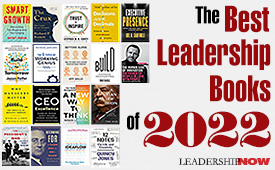

How to Do Your Start-Up Right STRAIGHT TALK FOR START-UPS 
Grow Your Leadership Skills NEW AND UPCOMING LEADERSHIP BOOKS 
Leadership Minute BITE-SIZE CONCEPTS YOU CAN CHEW ON 
Classic Leadership Books BOOKS TO READ BEFORE YOU LEAD |
|